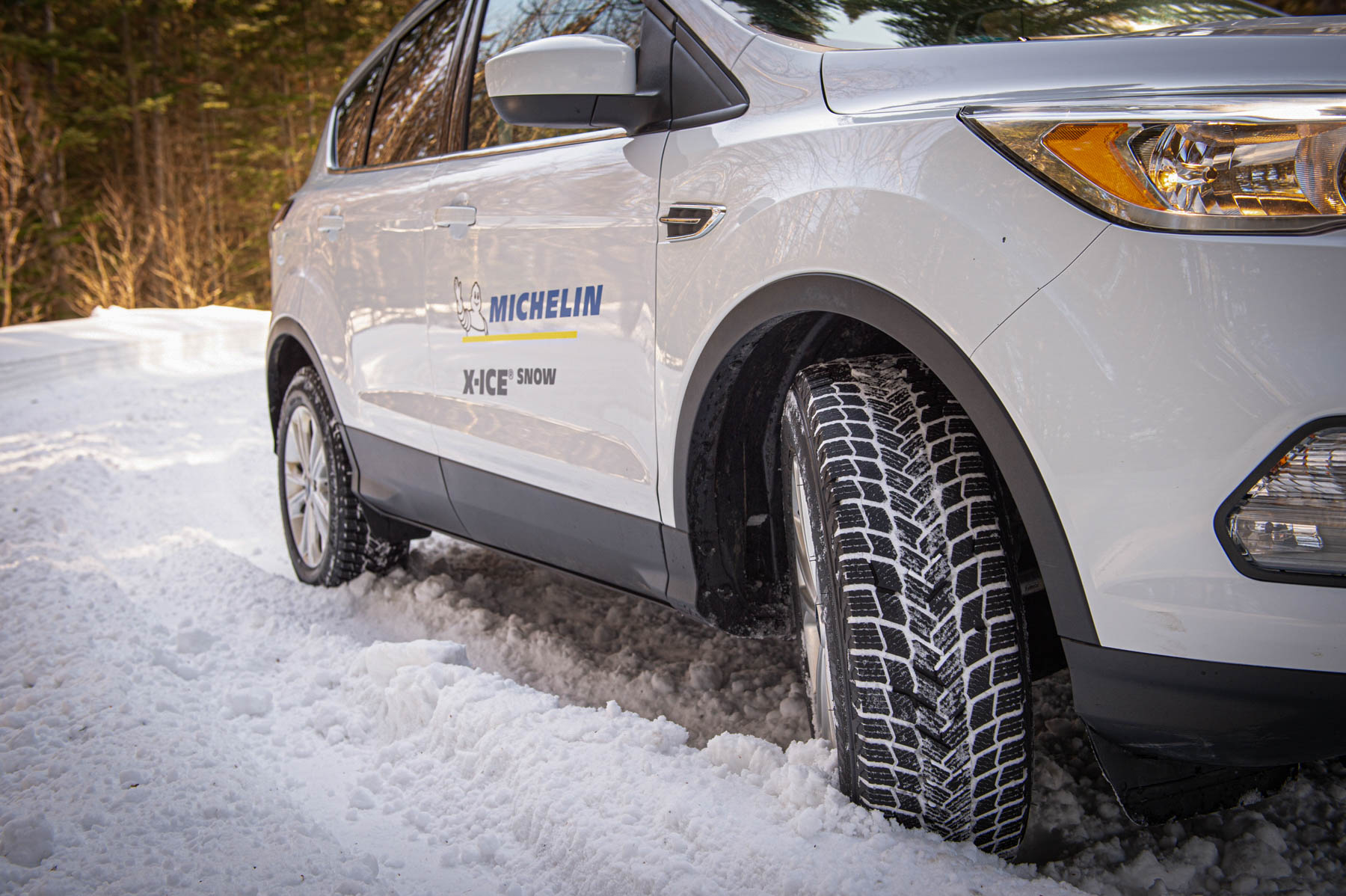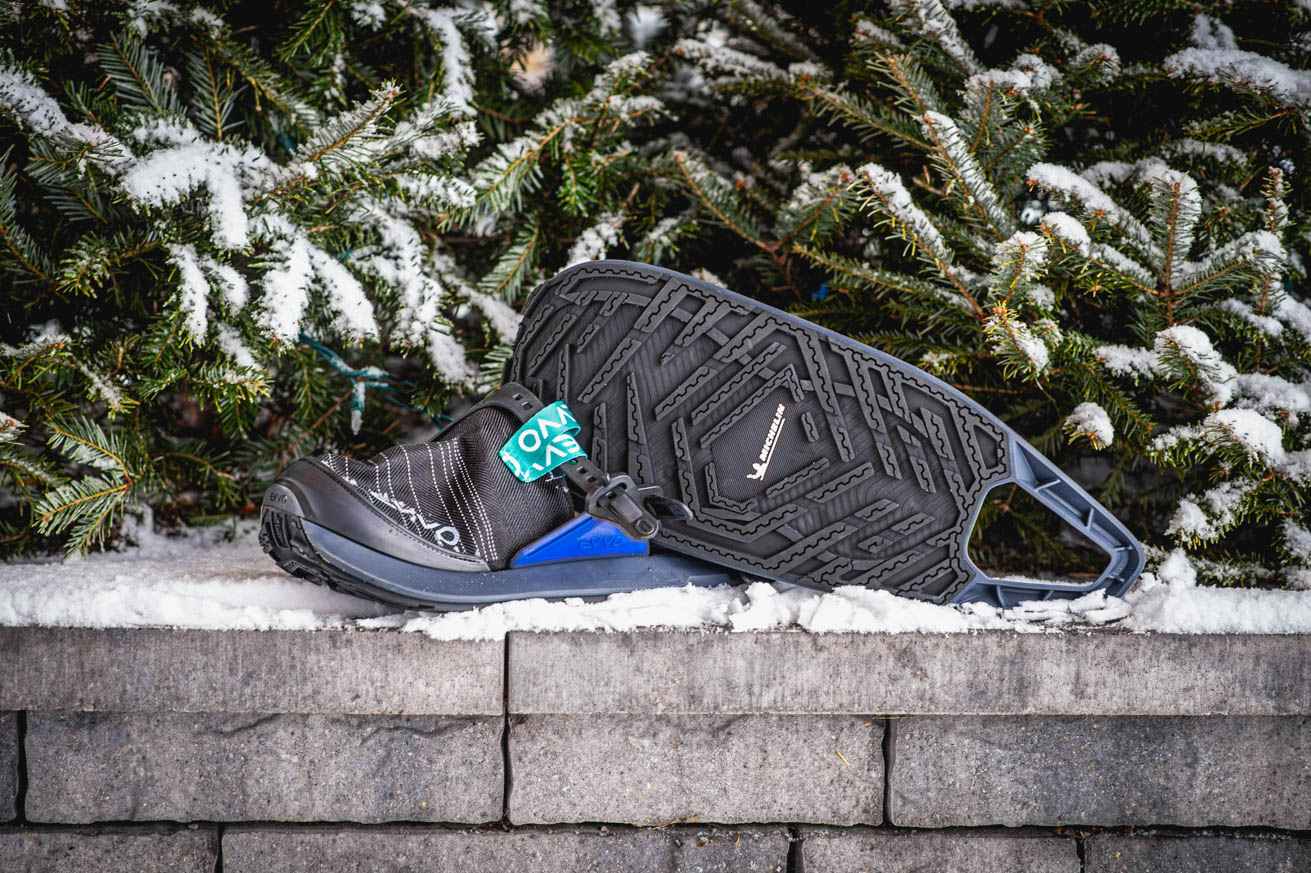Michelin Winter Tires Xperience // When inches matter

Words by Jill Ciminillo, photos courtesy of Michelin
NOTRE-DAME-DE-LA-MERCI, Canada – I keep rubber samples in my freezer. Go ahead and laugh.
The folks at Michelin did when I told them about it during the recent launch of the new Michelin X-Ice Snow winter tires.
And my husband laughs pretty much every time he opens the freezer door.
But I’m a huge believer in winter tires, and it’s often hard to get someone to believe they make a difference. This is because when they think “winter,” they think “snow.” If you don’t live in a particularly snowy clime or if the roads are well-plowed, what’s the point in “snow” tires?
Sure, the grooves and sipes help bite into the cold white wet stuff, but the other part of the equation is the rubber compound and how it reacts to freezing.
So, whenever someone wants to argue with me about the benefits of winter tires, I pull out my rubber samples. I show how the floppy bits of rubber are the winter compound and the straight stiff bits are the summer and all-season compounds.
If you need a better visualization, it’s like the difference between hard-soled dress shoes and rubber-bottomed winter boots on ice.
During the Michelin Winter Xperience, the folks at Michelin certainly wanted to drive home the benefits of winter tires in general, but they also wanted to show how their new X-Ice Snow tire is better than competitors’ tires.
Specifically, they were showcasing the benefits of the tread and the new Flex-Ice 2.0 compound.
To do this, they put us through a few exercises on slick surfaces and in deep snow using both new tires and tires worn down to 4/32nds.
But they had to get us up the mountain first.
IN THE REAL WORLD
The true irony of the situation is Michelin brought a bunch of us to Quebec to test winter tires, and we almost missed the opportunity to test said winter tires because of, well, winter.
As soon as we arrived, the sky started spitting out big fat fluffy beautiful flakes. Which you’d think would be perfect. But 6 to 12 inches later, the roads from our hotel in the town of Saint-Sauveur up the mountain to the track at Mecaglisse were largely impassible.
The bus driver who was hired to take us up there said he didn’t feel comfortable making the drive. So, Michelin delayed our departure to the track with the hopes the snow would slow down or stop. It didn’t. Then the bus driver finally and definitively said: Nope, not gonna do it.
Without the bus, Michelin enacted Plan B and brought the vehicles with Michelin tires we were going to be testing down the mountain to take us back up. I expected a slow and tortuous drive with our driver clutching at the wheel with white knuckles.
Not so.
In fact, if we dipped much below the speed limit, it wasn’t because our driver didn’t feel comfortable. It was because of the slow traffic in front of us. To be clear: We were in near white-out conditions for most of the drive up.
But the Michelin X-Ice Snow tires (and the finesse of a pro driver) kept us on the ice and snow covered road with nary a slip or scary moment.
We made it up the mountain unscathed at surprising speeds.
NEW TIRES ON ICE
During the first couple of exercises we were driving previous-generation Ford Escapes with new Michelin X-Ice Snow tires and new Nokian Hakkapeliitta R3 SUV tires.
On the slick surfaces we found the Michelin tires had overall better grip. Yes, they slipped, but they came out of a slide more quickly, bit into the ice better and stopped faster.
We had several turning points to maneuver through on the course, and while our speeds didn’t get much more than 20 mph there was a clear difference.
On the slalom, I felt the rear tires slip out from behind me more in the Nokians. And in the long sweeping curves, the Escape with Nokians went into a sideways drift that was fun on a closed course but would be terrifying on a highway off ramp.
The tires did eventually bite into the ice and bring the vehicle back in line, but for a split second I wasn’t sure they would.
Since we weren’t traveling at highway speeds, I didn’t feel out of control in the Nokians, they just weren’t as precise.
In fact, Michelin pointed out on average during their testing, there was a 100-foot difference in stopping on ice between the two tires. That translates into 5 car lengths and could mean the difference between being in an accident and driving away without a scratch.
NEW TIRES ON SNOW
When we transferred to a track with 6 to 12 inches of snow in the same type of vehicles with the same type of tires, we had a similar experience. The Michelin X-Ice Snow tires provided more stability and constant motion at higher speeds.
Swooshing through the snow was fun, and there was little fear of getting stuck or going sideways into a snowbank
The Nokians felt gummed up and had a more sluggish response to throttle and steering inputs. While no one got stuck during the exercise, I could see how it would happen.
When driving through deep snow, the key is constant, intense pressure on the gas pedal, which translated to about 25 mph in the deepest bits of snow while having your foot firmly pressing the gas pedal to the floor.
THE TROUBLE WITH WORN TIRES
The second set of exercises repeated ice handling and snow courses, but this time we were in current-gen Hyundai Elantra vehicles with worn Michelin X-Ice Snow tires and Bridgestone Blizzak WS90 tires.
The results were similar in that even at the point of needing to be replaced, the Michelin’s provided more grip and stability on slick and snowy surfaces. In deep snow, we were able to drive 1 to 2 mph faster. And driving faster means you don’t feel like you’re going to get stuck.
On the ice course, my instructor pushed me to go faster on the Michelin tires. He kept saying: You’re not slipping enough. So, I did – certainly faster that I would have on my icy alley back at home. But when we switched to the Blizzaks, I couldn’t maintain the same amount of speed without drifting.
Thus, once we hit the deep snow course, I felt so confident with the Michelin X-Ice Snow tires there were a couple times I aimed for the snowbanks. While I was feeling playful, I had a feeling I freaked out my instructor. He kept telling me to head back toward the ruts and grooves.
But we didn’t get stuck.
Plus, I was certainly more careful in the Blizzaks because I didn’t feel as confident with them after I saw how they handled on the ice course.
HOW DOES MICHELIN DO THIS?
Was this some sleight of hand on Michelin’s part? Did they use inferior tires to make their own tires look good? Not at all. By all accounts both the Hakkapeliitta and the Blizzaks are some of the best tires available for icy, snowy conditions.
Even one of my instructors, who was a professional rally driver, remarked on this, saying he was glad Michelin chose good tires to provide a better test.
So, what’s the deal?
In its simplest terms it comes down to the compound used to make the rubber and the pattern on the surface of the tires.
Let’s start with what the tires are made of. The Flex-Ice 2.0 tread composition uses a full silica-based compound, and this helps the rubber maintain flexibility in extreme cold conditions. Michelin also uses EverGrip technologies with the compound to help improve grip in both snowy and icy conditions.
Next, Michelin has updated its tread pattern, suppressing the center groove and creating larger gaps with more biting edges. This helps the tire grip the ice and evacuate snow and slush better. They’ve also added notched sipes (or grooves) of variable thickness, which increases the “claw effect” on snow and ice.
The biggest thing, Michelin has done, however, is make sure all of these features go “from top to bottom,” meaning that the compound and tread patterns go deep.
In fact, the folks at Michelin stated that you could wear the tires down to 2/32nds – even though you’re supposed to replace the tires at 4/32nds – because the siping and compound go beyond the required limits. A lot of the competitive tire brands don’t.
Another bonus with the Michelin X-Ice Snow tires is longevity. They’re designed to last one additional winter over the average competitor.
MORAL OF THE STORY
Winter tires make a difference – the better the tires, the bigger the difference.
While sliding around on a closed course is fun, you could easily see what would happen when you replace a mound of snow with a concrete barrier or a cone with another car. Inches matter.
It’s hard to say the competitive tires we tested were bad. The Michelin X-Ice Snow tires were just better.










































